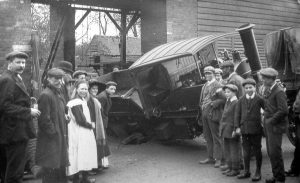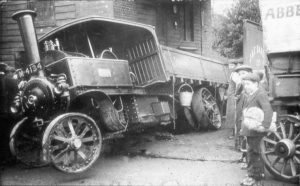There were leather tanneries from at least the 13th to the 20th centuries which was handy for the local boot and shoemakers. Generally, they were located downstream so that smelly discharges into the river could be removed without giving too much offence to the townspeople. In Romsey they were mostly located in which led to the use of mill wheels to drive the bark mills. Bark mills worked by crushing tree bark under a heavy stone wheel with a serrated rim that rolled around a circular track. This produced a coarse powder which was then steeped in water to produce a solution of tannin, the essential ingredient for curing animal hides.
The water discharged from the Town Mill drove the wheel for the Middlebridge Street tannery. The water cost money. Mr Charles Fluder-Smith who had the tannery in 1877 paid £7 per annum to the owners of Town Mill who had the rights to the stream bed. This was good business for the Town Mill.
The Middlebridge Street tannery, in 1905, had 63 tanning pits, a bark yard and bark rick; the water-wheel drove not only the bark-mill but also the pumps that fed the tanning pits. The tannery closed in 1926 but the water-wheel remained in place for some time afterwards and was finally removed in the 1950s.
Sources:



